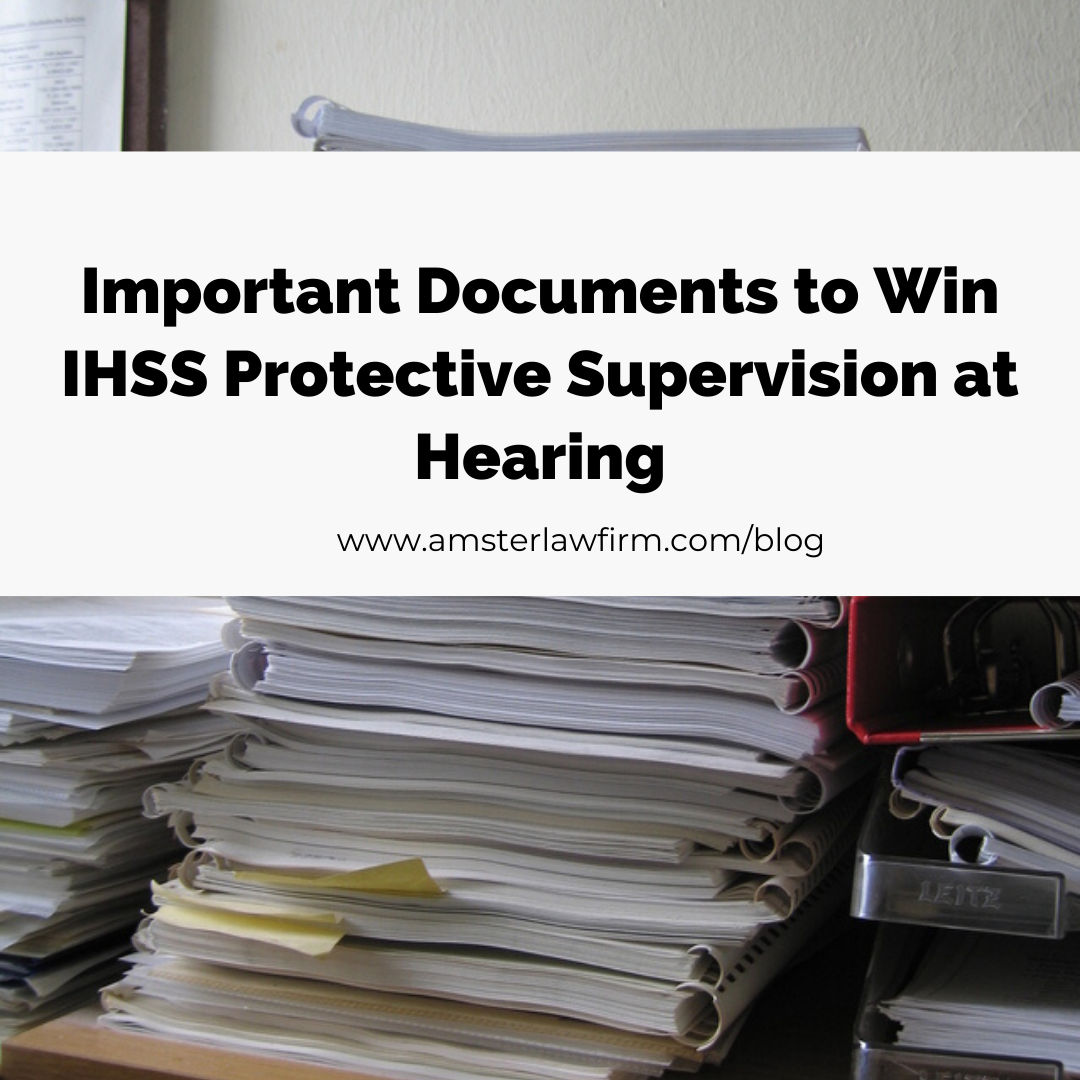Whether you’re applying for protective supervision for the first time or appealing a denial, your ability to provide the right documentation will likely make or break your case. We help our clients present the following documentation:
- Dangerous Behavior Log;
- Assessment of Need for Protective Supervision (SOC 821);
- Individualized Education Program (IEP) (if the applicant is a minor);
- Regional Center Documents, such as an Individual Program Plan (IPP) and Individualized Family Service Plan (IFSP) (if the applicant is a client of a regional center);
- Any other assessment or report that shows the applicant attempts to engage in dangerous behaviors and has difficulty assessing the risk of harm; and
- Authorized Representative Form (if the applicant retains a lawyer or representative).
You should diligently keep a Dangerous Behavior Log for at least three weeks. In addition to describing dangerous behavior, you should also record attempted behavior, meaning that the applicant does not actually have to do something dangerous. As long as the applicant tries to do something dangerous, that attempt should be recorded. For example, if your child tries to escape from home, tries to eat something inedible, tries to touch the hot stove, etc., but you prevent it from happening, you should record that incident. Be sure to include the date of the incident, a brief description of the incident, and how many times per day it occurred. The more entries you include in the log, the stronger the case for protective supervision.
The applicant’s doctor should fill out the Assessment of Need for Protective Supervision (SOC 821). Typically, recipients of protective supervision are evaluated as “severe” under memory, orientation, and judgment. You should schedule an appointment with the applicant’s doctor, review the dangerous behavior log together, and provide the doctor with specific examples of the applicant’s deficiencies in memory, orientation, and judgment.
- Memory refers to the applicant’s ability to recall learned behaviors and information. Examples of severe memory deficit: applicant forgets people, places, things, to start or finish an activity, and cannot maintain much continuity of thought in conversation.
- Orientation refers to the applicant’s awareness of time, place, self, and other individuals in one’s environment. Examples of severe disorientation: applicant wanders off; lacks awareness or concern for safety or well-being; unable to identify significant others or relate safely to environment or situation; minimal sense of time.
- Judgment refers to the applicant’s capacity to make safe decisions and understand consequences. Examples of severely impaired judgment: applicant makes decisions without regard to personal safety or health.
If the applicant is a minor, review past IEPs. You should highlight any reference to behavior goals, behavior plans, behavioral aides, safety concerns, and if your child requires more oversight than a neurotypical child of the same age.
If the applicant is a client of a regional center, provide relevant regional center documents, such as an IPP or IFSP. Also, make sure to highlight any behavior and safety concerns.
You should provide any other documentation, including assessments and reports, that shows the applicant engages in dangerous behavior and has difficulty assessing the risk of harm. For example, a functional behavior assessment would explain your child’s disruptive behaviors, which might serve as helpful supporting evidence that your child requires protective supervision. However, this additional documentation is not essential and certainly not as important as the above items.
Lastly, if you retain a lawyer or advocate to help you with your protective supervision case, IHSS requires an authorized representative form.
Providing IHSS with the proper documentation will greatly increase your chances of receiving protective supervision and ensuring the safety of your loved one. Also, if there are any discrepancies or incorrect information in any of the documents that you need to provide, you should seek to get the documents corrected prior to providing the documents to IHSS.


Add Comment